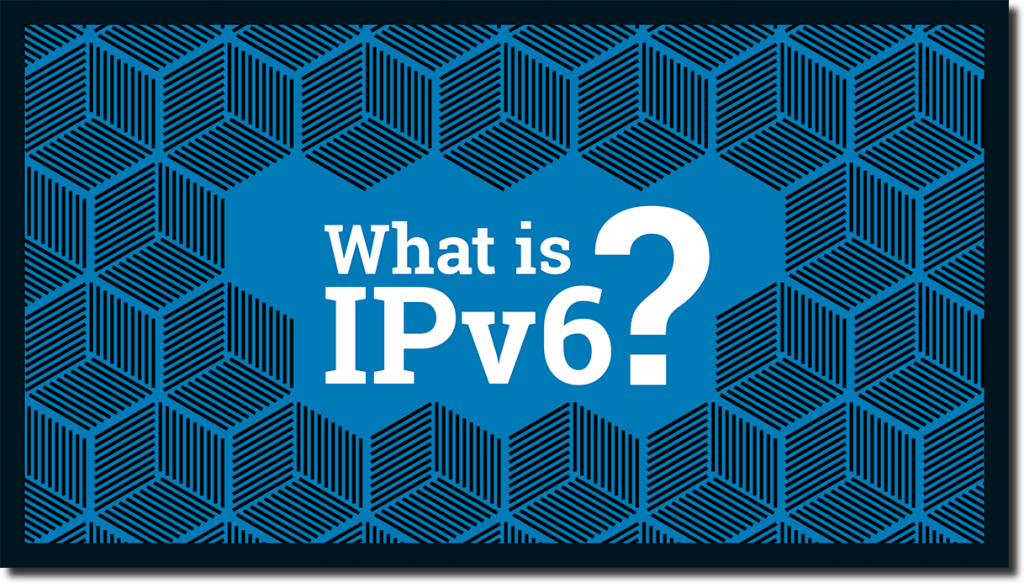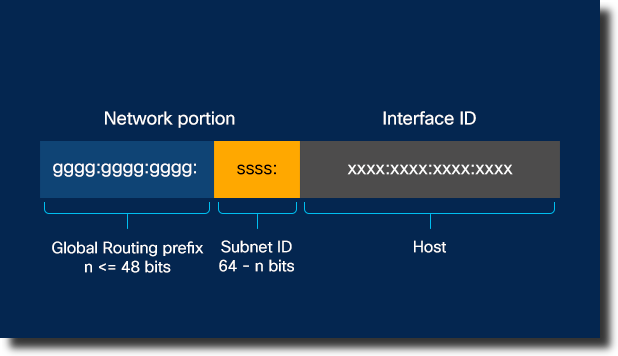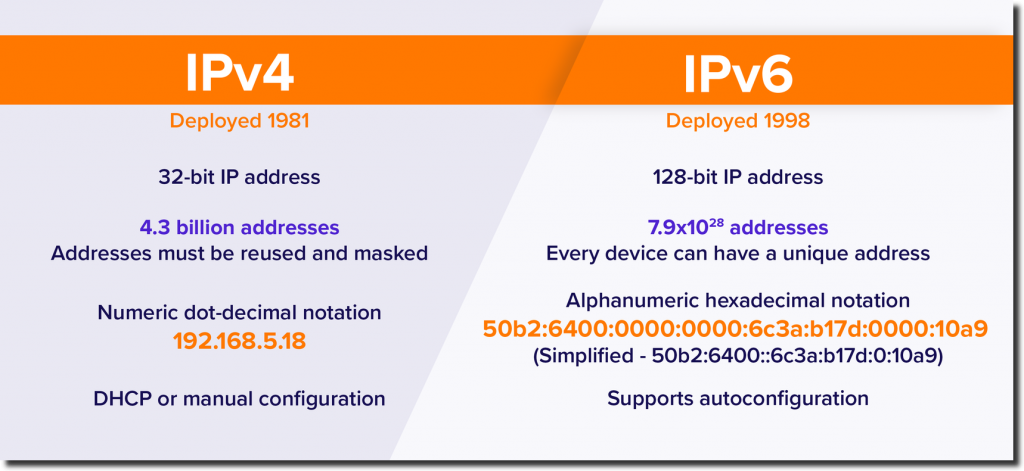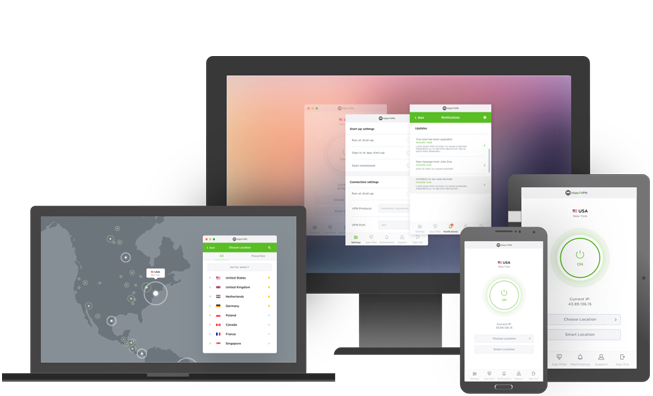 Are you familiar with IP addresses? If so, then you’ve probably heard of IPv4. But did you know that there’s a newer version called IPv6? With the increasing demand for more internet-connected devices, IPv6 has become essential in meeting this growing need. So what is ipv6?
Are you familiar with IP addresses? If so, then you’ve probably heard of IPv4. But did you know that there’s a newer version called IPv6? With the increasing demand for more internet-connected devices, IPv6 has become essential in meeting this growing need. So what is ipv6?
In this blog post, we’ll explore what IPv6 is, its benefits over its predecessor, and how to use it effectively. Plus, we’ll also discuss how VPNs work with IPv6 and provide resources for further reading on the subject. Let’s dive in!
What is IPv6?
IPv6 is the newest version of the Internet Protocol (IP) that enables devices to communicate with each other over a network. It was created to solve some of the limitations and address the exhaustion issues of its predecessor, IPv4. Unlike IPv4, which uses 32-bit addresses, IPv6 uses 128-bit addresses.
With this increased number of available addresses, IPv6 can accommodate more internet-connected devices than ever before. In fact, it’s estimated that there are enough unique IP addresses in IPv6 for every grain of sand on earth!
Another benefit of IPv6 is improved security features such as encryption and authentication. Additionally, it offers better support for quality-of-service protocols, making it easier to prioritize network traffic.
Adopting IPv6 is crucial in preparing for the future growth and demand for internet-connected devices worldwide.
The Benefits of IPv6
IPv6 offers a number of benefits compared to its predecessor, IPv4. One of the most significant advantages is the expanded address space that IPv6 provides. While IPv4 only supports about 4 billion unique IP addresses, IPv6 can support around 340 undecillion (that’s 3.4 x 10^38) unique IP addresses! This means that there are more than enough addresses to accommodate every device on the planet and then some.
In addition to the expanded address space, IPv6 also includes built-in security features such as IPsec encryption and authentication. This helps to protect against attacks such as spoofing and man-in-the-middle attacks.
IPv6 also improves network performance by reducing latency and improving routing efficiency. With IPv6, packets can be sent directly from source to destination without having to go through intermediaries or use complex workarounds like Network Address Translation (NAT).
Adopting IPv6 allows for easier management of networks with large numbers of devices. Automatic address configuration simplifies deployment and reduces administrative overhead compared to manual configuration required in an IPv4 environment.
Making the transition from IPv4 to IPv6 brings numerous benefits that will help improve internet connectivity for years ahead.
How to Use IPv6
 Using IPv6 is not as complicated as it may seem. The process of using IPv6 will vary depending on the device you’re using and the network setup you have in place.
Using IPv6 is not as complicated as it may seem. The process of using IPv6 will vary depending on the device you’re using and the network setup you have in place.
To use IPv6, you’ll need to make sure that your devices and network hardware are compatible with this protocol. You can check if your device supports IPv6 by going to its settings or by checking with the manufacturer’s website.
Once you’ve confirmed that your devices support IPv6, ensure that they are configured to prioritize this protocol over others such as IPv4. This can be done through the settings menu on each device.
If you want to configure an IP address for a device manually, you can do so by entering the appropriate information in its network settings section. Most modern operating systems provide automatic configuration options for both DHCPv6 and SLAAC protocols.
It’s essential to test whether everything is working correctly after configuring your devices for IPV6 connectivity. Visit websites designed specifically for testing IPV6 data transfer speeds and reliability like test-ipv6.com or ipv6-test.com
By following these simple steps, users can easily start enjoying all benefits of IPV 5 without any issues or complications involved in their networking infrastructure setup!
Transitioning from IPv4 to IPv6

via Avast
With the increasing demand for IP addresses, IPv4 is running out of available addresses. To solve this problem, IPv6 was introduced to provide an improved version with a significant increase in the number of available IP addresses.
Transitioning from IPv4 to IPv6 can be a challenging task that requires careful planning and execution. Most organizations have already started upgrading their infrastructure to support both protocols simultaneously during the transition phase.
During the transition period, it’s essential to ensure compatibility between different systems that may use either protocol. The two protocols are not directly compatible with each other. However, there are several techniques like tunneling and translation mechanisms that enable communication between them.
Another challenge faced during transitioning is training personnel on how to configure and manage dual-stack networks effectively. IT staff should be well-versed in both protocols’ functionality so they can maintain network availability while making necessary changes.
The benefits of transitioning from IPv4 to IPv6 outweigh the challenges encountered during migration as it provides more address space, enhanced security features, better auto-configuration capabilities and many more advantages over its predecessor.
Transitioning from IPV4 to IPV6 involves careful planning and execution but offers numerous benefits over using only IPV4 or relying solely on transitional technologies such as NAT64 or DS-Lite tunnels for Internet connectivity.
Resources for Learning More About IPv6
For those who are interested in learning more about IPv6, there are a variety of resources available online. One great place to start is with the Internet Society’s “Introduction to IPv6” course, which provides an overview of the protocol and its benefits.
Another useful resource is the IPv6 Forum, which offers a wealth of information on everything from implementation strategies to best practices for network administrators. The forum also includes discussion boards where users can ask questions and share their own experiences with IPv6.
The American Registry for Internet Numbers (ARIN) is another valuable resource for those looking to learn more about IPv6. ARIN offers a range of training courses and webinars designed to help network professionals understand how to implement and manage the new protocol effectively.
Many vendors offer free guides or whitepapers that provide detailed information on specific aspects of IPv6 deployment. These resources can be particularly helpful for organizations that are just getting started with transitioning from IPv4 to IPv6.
With so many resources available, it has never been easier to get up-to-speed on this important networking technology!
IPv6 and VPN
IPv6 and VPN are two technologies that work together to provide a secure and reliable internet connection. VPN, or Virtual Private Network, is used to encrypt your online traffic and protect your privacy while browsing the web. IPv6, on the other hand, is a new version of the Internet Protocol that provides more IP addresses than its predecessor IPv4.
If you’re using a VPN service with IPv6 enabled, it’s important to make sure that your provider offers support for this protocol. Not all VPN services currently offer this option. This means that your device might not be able to connect properly if you try accessing an IPv6-enabled website.
However, using both technologies together can also improve network performance by reducing latency and improving connectivity between devices. This is especially useful in situations where multiple devices need to be connected simultaneously.
Combining these two technologies allows users to have greater control over their online security while enjoying faster connections at the same time.
Best VPN for you
HideIPVPN offers a VPN service with military-grade encryption, and high-speed servers with unlimited bandwidth.
Our service comes with shared IP addresses so that your activity can never be tied to one particular user, further protecting your privacy.

We also offer DNS leak protection, a Kill Switch, the latest VPN protocols, and a guaranteed no-log policy.
Best VPN Deal! Get HideIPVPN for $2.7/mo!
Every purchase you make comes with a 30-day money-back guarantee.
Conclusion
IPv6 is the future of Internet protocol and its implementation is crucial for the growth and development of the internet. With its vast number of addresses, it provides a solution to overcome the limitations of IPv4 and supports new technologies like IoT devices, mobile networks, and cloud computing.
Transitioning from IPv4 to IPv6 may seem daunting at first but with proper planning and execution, it can be done seamlessly. Organizations need to start adopting IPv6 as soon as possible in order to avoid any disruption in their network operations.
Moreover, VPNs are an essential tool for secure remote access over a public network like the Internet. The integration of VPN services with IPv6 will enhance security features such as end-to-end encryption which protects data from being intercepted by unauthorized users.
Learning about IPv6 can be overwhelming but there are many resources available online that provide comprehensive information on this topic. As more organizations adopt this protocol and embrace its benefits we can expect a better-connected world with improved functionality across all aspects related to networking.



